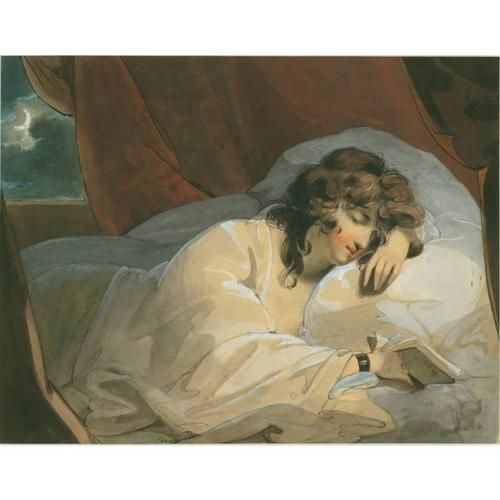
Richard Westall, The Dream
Sleep was recognized, early on, as an important part of keeping healthy. From (1828) The book of health:
Historian Roger Ekirch published a paper in 2001 demonstrating that humans used to sleep in two four hour chunks, with a period of one to two hours of being awake in between where they might chat, go to the bathroom, read, or pray (http://www.bbc.com/news/magazine-16964783). References to these habits, according to Ekirch, started to fade in the late 17th century so that by the time the 20th century rolled around it was almost eradicated from collective memory.
Ekirch and others attribute the longer sleeping window to be related to less light (and the expense of candles) and the dangers that lurked (or perceived dangers) in the night…like drunks, criminals and prostitutes.
The argument continues that as access to gas lighting, more 24 hour coffee shops and other amenities began springing up in the 19th century, the window of time wealthy people allotted themselves (which then trickled to others) to sleep shrank, and we were blessed with the modern sleep cycle recommendation of eight uninterrupted hours.
Its worthwhile considering that many people in the Regency may have still followed the longer, broken sleeping habits that they remembered from youth or were taught by their parents.
This article has some fascinating tidbits from other 19th century sleep recommendations: https://vanwinkles.com/the-most-mindblowing-medical-advice-on-sleep-from-the-1800s











